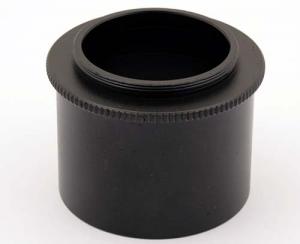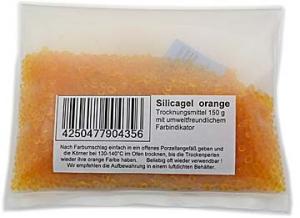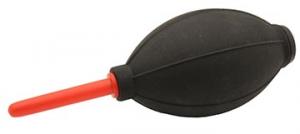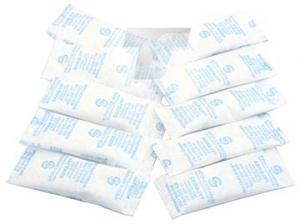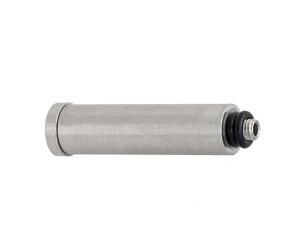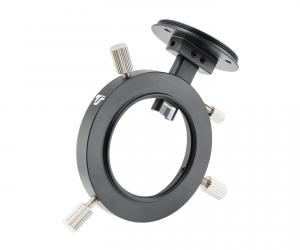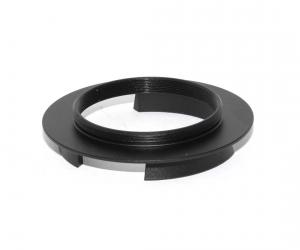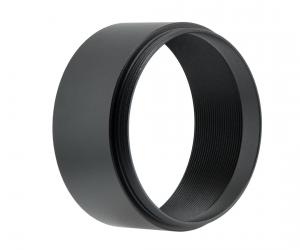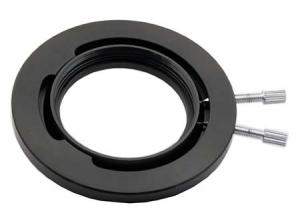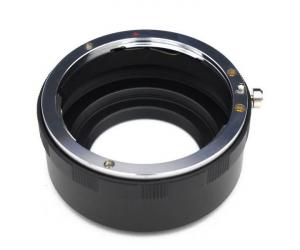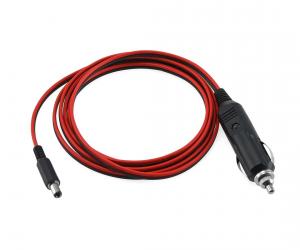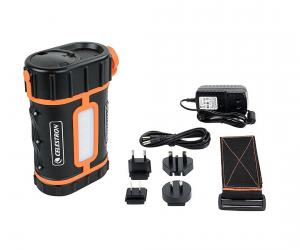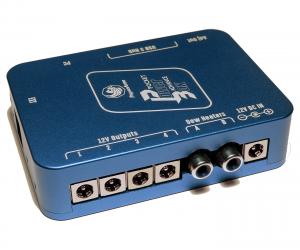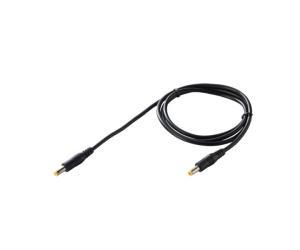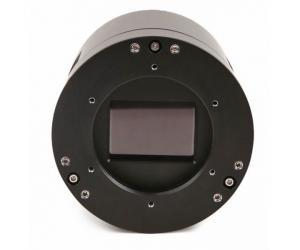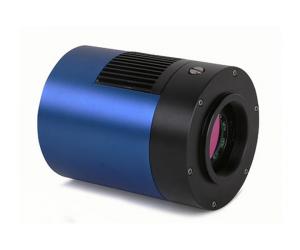- Telescopes
- Overview:
Telescopes - Achromatic Refractor
- Apochromatic Refractor
- Overview:
Apochromatic Refractor - ED Refractor - less color aberration than an achromatic
- SD APO - color free 2-element APO objective
- EDT APO - 3 element ED objective
- High End APO with 3-element APO objective - no color aberation
- Flatfield APO with flat field for Astrophotography
- All Apos and EDs from all manufacturers - large overview
- TS APO and ED from Japan with high quality optics
- Overview:
- Newtonian Telescopes
- Dobsonian Telescopes
- RC Ritchey Chretien Telescopes
- Casssegrain Telescopes
- Reflektor Telescopce with Lens Correcture
- Maksutov Cassegrain Telescopes
- GoTo Telescopes
- Solar Telescopes H-Alpha
- Overview:
- Mounts Tripods Rings Rails Power Supply ...
- Overview:
Mounts Tripods Rings Rails Power Supply ... - Mounts Equatorial with GoTo
- Mounts Equatorial without GoTo
- Mounts Azimutal with GoTo
- Mounts Azimutal without GoTo
- Mounts GoTo - Harmonic Drive
- Travel mounts for astro imaging
- Tripods Piers Polar Wedges
- Mount Control & Electronics
- Dovetail Clamps, Plates and Mount Adapters
- Tube Rings
- Power Supply
- Counterweights Balance Weights
- Mount Accessories - Other
- Overview:
- Telescope Accessories
- Overview:
Telescope Accessories - Eyepieces
- Barlows & Reducer Lenses
- Diagonal Mirrors and Prisms
- Binocular Viewers
- Finder Scopes
- Telescope Collimation and Test
- Cleaning Tools
- Transport and Storage
- Dust protection for Telescopes & Accessories
- Stray Light Protection
- Dewcaps and Heater
- Focusers, Adapters, Motorfocus
- Telescope DIY & Improvement
- Other telescope accessories
- Replacement Parts
- Overview:
- Filters
- Overview:
Filters - Color Filters and Color Filtersets
- Nebular Filters for Visual Observing
- Neutral-Density and Polfilter
- Photo Narrowband Nebular Filters
- Photo Broadband Filters
- Photo Planetary Filters
- Photo R-G-B and IR Cut Filters
- Photo - Filtersets
- Photometric Filters
- Clip Filter for DSLR Cameras
- Filter Wheels and Filterslider
- Solar Filters for white light
- Solarfilter for H-Alpha and Calcium
- Overview:
- Adaptors
- Overview:
Adaptors - Adapter 1,25" and 24,5mm
- Adapter 2"
- Adapter T2 - M42x0.75
- Adapter M48x0,75
- Adapter M54
- Adapter SC
- Adapter M63
- Adapter M68
- Adapter to other Threads
- Adapter Extensions
- Adapter camera bayonet
- Adapter Objective Filterthread
- Adapter Quick Changing , Rotation
- Adapter Eyepiece Projection
- Adapters Tilting
- Overview:
- Astrophotography and Photography
- Overview:
Astrophotography and Photography - Cooled Cameras
- Cameras without Cooling
- Deep-Sky Cameras uncooled
- Set-Offers Camera, Filter, Wheels
- Acessories for Cameras
- Travel mounts for astro imaging
- Imaging Correctors for Telescopes
- Autoguiding Cameras & Sets
- Everything for Guiding
- Focusing aids - Bahtinov mascs
- Flat Field foils and boxes
- Lenses for Cameras
- Piggyback Camera Holder
- Camera Bags, Photocases & more
- Digital Camera and Smartphone Adapter
- Other photo accessories
- Overview:
- Binoculars, Spotting Scopes, Microscopes, Range Finders
- Overview:
Binoculars, Spotting Scopes, Microscopes, Range Finders - Roof Prism Binoculars
- Binoculars with Porro prisms
- Binoculars from 100mm Aperture
- Binoculars with 1,25 inch eyepieces
- TSMX APO Binoculars
- Binoculars for Astronomy
- Binoculars Hiking Bird watching
- Monoculars - Opera Binoculars
- Accessories for Binoculars
- Spotting Scopes
- Range Finders
- Microscopy
- Bags for Phototripods & Binoculars
- Overview:
- Phototripods and Binomounts
- Books, Software
- Overview:
Books, Software - Books for Astronomy Beginners
- Star Charts and Planispheres
- Books about our Solar System
- Observing Tips for Amateurs
- Popular Astronomy Literature
- Teaching material
- Astrophotography books
- Telescopes, Observatories, Construction
- Calendars Yearbooks
- Software, Star Charts
- Books for Microscopers
- Books Nature and Animals
- Nature Photography TimeLapse
- Overview:
- Night Vision, Magnifiers, Weather, Domes & more
- Beginner Astronomy and Gift Ideas
- Second Hand & Special Offers
- New products
Manufacturer: -TS Zubehör
Product number: TS492MPG2
EUR1566.00new
EUR 1.566,00RRP EUR 1.699,00you save 7.8% (EUR 133,00)
incl. 19 % VAT (DE)
The VAT indicated refers to that applicable in Germany. After logging in, the VAT amount is adjusted to the applicable VAT of the stored delivery country. Therefore, the final price may vary accordingly.
excl. 6.95 € shipping costs (DE)
more details to the shipping costs ...Please log in to calculate shipping costs to your country.
There are no reviews for this product
- Details..
- Technical data..
- In the box..
- Reviews..
- FAQ..
- Manufacturer infos..
- Safety informations..
TS ToupTek 492MP Cooled Monochrome Astro Camera
This camera features a high-resolution 4/3" sensor with a 4128x2880 pixel array, utilizing 4.63 µm pixels. It has built-in 14-bit ADC (8-bit mode for more fps in higher resolutions), 15 ke full well capacity, and supports several binning modes.Additionally, the camera has an excellent TEC cooling system which maintains precise temperature control within a deviation of 0.1 °C, while the dew prevention heater (window heating) further enhances performance.
Versatile high-performance sensor
The camera with the powerful Sony IMX492 back-illuminated sensor allows astrophotography on a very high level. This modern sensor can be used for all areas of astrophotography. The 4.63 µm pixels make this camera an all-rounder with highest sensitivity for short exposure times.
For extreme resolution, the TS492MP can be switched to Unlocked mode. The light sensitivity then drops to a quarter, but the pixel size is only a tiny 2.315 µm - for the currently highest detail sharpness with this sensor size!
You can run the camera in multiple resolutions, including Unlocked Mode. Here are the frame rates for 8-bit ADC and USB 3.0:
Another advantage is the high light sensitivity. The QE of 80% by the BACK ILLUMINATION technology already allows deep astro images with short exposure times, but the exposure time can be set for up to 1 hour, ensuring that every little detail is captured. This makes the camera very well suited for deep sky photography.
Astrophotographic results obtained with this camera on Astrobin
Here are some astrophotographs taken with a same-built camera model: Link to Astrobin
Back-illumination technology
Sony´s back-illuminated CMOS imaging sensor offers higher sensitivity with improved quantum efficiency of approx. 80%. This allows for significantly shorter exposure times. The advantages of CMOS image sensors, such as low power consumption and high operating speed, have been retained.
DDR3
This camera has a 512 MB (4 Gb) ultra-fast memory buffer to ensure stable image transmission.
Two stage TEC cooling system
This camera is designed with an integrated heat dissipation structure and an efficient cooling module. The cooling system features a two-stage Thermoelectric Cooling (TEC) with controllable electric fan assisting in heat dissipation. This allows the image sensor to operate at temperatures up to 42 degrees Celsius lower than the ambient temperature. Even in summer, it can still run stably all night with cooling temperatures ranging from of -5 °C to - 10 °C.
Anti-dew technology
The camera adopts the new anti-dew technology, which can effectively solve the condensation problem through heating. This heating function consumes about 5 watts, which can be turned off via software to save power.
Additionally, the dew heater at the protection window has 4 adjustable levels, allowing users to find the heating power that best suits their needs.
Connection to correctors with M48 thread and 55 mm working distance with filter change
Most coma correctors or field flatteners for refractors have 55 mm working distance and a M48x0.75 thread on the camera side. Here you will find an interesting suggestion for the connection. The camera has a back focus of 17.5 mm from the T2 female thread. The adapters are from the camera to the corrector:
1. TSFSLM48T2 - filter drawer with T2 connection on the camera side and M48 thread on the telescope side.
2. TSVF220 - 20 mm M48 extension.
Total 55.5 mm flange focal distance - the 0.5 mm compensates well for the glass path of the filter - spot landing!
Please remember:
All ToupTek Astro DSO cooled cameras can only be powered by 12 V / 3 A DC power supply. We recommend using the power adapter that comes with the camera or a lithium-ion battery with stable output of 11-14 V. Please do not use power supplies that have falsely stated specifications or unstable outputs to power the camera, as this may affect image capture or even damage the camera.
The manufacturer of the camera is ToupTek
As one of the largest manufacturers of professional cameras for digital photography, ToupTek brings the necessary knowledge for cameras that just work. Teleskop Service receives the cameras directly from the manufacturer, we are in direct contact with ToupTek to provide you with first class service.
Optimal support before and after purchase through Teleskop-Service
Through many years of experience, we can offer you optimal advice and also a very good after-sales service. We can perform almost all services at our premises. For a professional service we have among other things also a clean cabinet, where we can carry out repairs, cleaning etc. under dust exclusion.
Product videos
Teleskop-Service has made an overview video for ToupTek´s cameras:
A second video deals with the setup and configuration of the cameras:
Informative PDF files about the TS-Optics/ToupTek cameras
We have made two helpful PDFs about some cameras from TS-Optics.
The first one gives general information about many cameras, it is in German language and can be downloaded here.
The second PDF lists information about some camera sensors, you can download it here.
Driver and Software
ToupTek provides drivers and software for this camera, you can download them here.
Good storage is an important preventive measure against dew and also extends the service life
After use, put the camera straight into the TS Protect Case and add some silica gel. During storage, the silica gel absorbs the moisture from the camera. At the same time, the penetration of moist room air is prevented. Dry storage can even partially regenerate the small desiccant tablets in cooled cameras. Your camera or accessories are always ready for you in optimum condition. You can find the silica gel and the case in our product recommendations.
The cameras are not airtight, so if the camera remains on the telescope, it is exposed to moisture. The small amount of desiccant in the camera can protect the sensor and the inside of the protective glass from moisture for the duration of the exposure, but not for days on end. Moisture problems can be the result. A simple trick is to stretch a plastic bag around the focuser to which the camera is attached so that no air can get in. Silica gel is placed in a small cloth bag inside the plastic bag. This will also create a "dry climate zone" for the camera on the telescope. This allows you to leave the camera on the telescope for a few days for an imaging session lasting several days.
In the medium and long term, however, this is no substitute for proper storage in an airtight case with silica gel.
| Sensor: | 4/3" CMOS monochrome sensor IMX492 |
| Size: | 19.1 mm x 13.0 mm, diagonal 23.1 mm |
| Pixel size full resolution: | 4.63 µm |
| Number of pixels full resolution: | 4128 x 2808 - 11.6 MP |
| Pixel size unlocked: | 2.315 µm |
| Number of pixels unlocked: | 8184 x 5616 - 46 MP |
| Bit depth: | 14 |
| Bit depth unlocked: | 12 |
| Frames per second (8 bit): | approx. 33.3 fps at full resolution, approx. 8.0 fps unlocked |
| Shutter: | Rolling shutter |
| Exposure time: | 0.1 ms - 3600 s |
| Full well: | 66 ke- |
| Cooling: | Peltier cooling up to 35 °C (short exposure) or 42 °C (long exposure) below ambient temperature |
| Window: | AR-coated clear glass |
| Buffer: | 512 MB DDR3 |
| Connection ports: | USB 3.0 and USB 2.0 |
| Power supply: | USB port, 5.5/2.1 mm coaxial power connector (2.1 mm DC connector) for 12 V, 3 A |
| Supported operating systems: | Windows from XP, OS X, Linux |
| PC requirements: | Memory 2 GB or more, CPU equal Intel Core2 2.8 GHz, USB2.0 or USB3.0, CD-ROM |
| Operating temperature: | -10 °C - 50 °C |
| Body diameter: | 80 mm |
| Body length: | 107.1/101.6 mm |
| Connection telescope side: | T2 internal thread (M42x0.75) |
| Back focus: | 17.5/12.5 mm (distance sensor to internal thread) |
| Camera weight: | 577 g |
- Camera
- 12.5 mm M42M front ring adapter
- M48-M42 adapter ring (0 mm optical path)
- M48F-M42M extender (16.5 mm optical path)
- M42M-M42F extender (21 mm optical path)
- Power supply unit (12 V DC, 3.3 A)
- Mains cable
- USB 3.0 high-speed cable, length 1.5 meters
- Dust cap
- Note with QR code and web link
- 12.5 mm M42M front ring adapter
- M48-M42 adapter ring (0 mm optical path)
- M48F-M42M extender (16.5 mm optical path)
- M42M-M42F extender (21 mm optical path)
- Power supply unit (12 V DC, 3.3 A)
- Mains cable
- USB 3.0 high-speed cable, length 1.5 meters
- Dust cap
- Note with QR code and web link
Astrophotographic results obtained with this camera on Astrobin
Here are some astrophotographs taken with a same-built camera model: Link to AstrobinQuestion:
Higher resolution in unlocked mode?
Answer from Teleskop-Service:
ToupTek provides a slightly more up-to-date firmware in which exclusively hardware binning is activated. However, it has a bit depth of 12 bits.
It is important to update the Touptek.dll file in, for example, N.I.N.A. Otherwise, the cooling will not work after the initial installation of N.I.N.A.
However, ToupSky does. You can use it to test. In ToupSky, you can set the bit depth from 8 bits to 12 bits. Please note that this step is not reversible. Once you have opted for the higher resolution, you have to stick with it.
| Manufacturer / Importeur: | Teleskop-Service Ransburg GmbH |
| Street: | Von-Myra-Str. 8 |
| ZIP / City: | 85599 Parsdorf |
| Country: | Germany |
| Telefon number: | +49 89 99228750 |
| Email: | info@teleskop-service.de |
| Website: | www.teleskop-express.de |
Safety informations: PDF Download
Recommended accessories
Adaptors
TS-Optics Focal Adapter from 2 Inch to T2 (M42x0,75)
EUR 29,90RRP EUR 34,90you save 14.3% (EUR 5,00)
Customers who bought this product also bought...
General Accessories
Photo Acessories
TS-Optics Off-Axis Guider TSOAG9 - Length only 9 mm
EUR 119,00RRP EUR 159,00you save 25.2% (EUR 40,00)
Power Supply
Similar Products
TS-Optics ToupTek Color Astro Camera 294CP Sony IMX294 Sensor D=23.2 mm
EUR 899,00RRP EUR 1.099,00you save 18.2% (EUR 200,00)
TS-Optics ToupTek SkyEye24AC Full Frame Color Astro Camera, cooled - Sensor D=43.3 mm
EUR 2.399,00RRP EUR 2.990,00you save 19.8% (EUR 591,00)
TS-Optics ToupTek Cooled Mono Astro Camera 183MP, Sony IMX183 Sensor, D=15.9 mm
EUR 999,00RRP EUR 1.290,00you save 22.6% (EUR 291,00)
Reviews




















